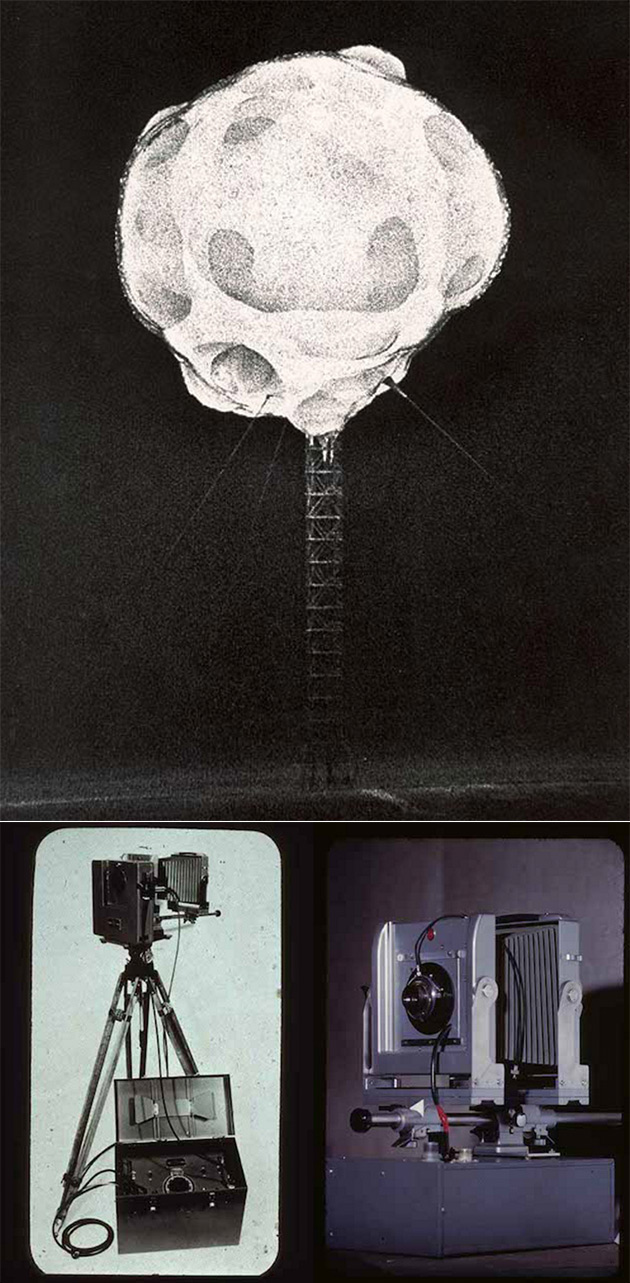
The rapatronic camera is a high-speed camera capable of recording a still image with an exposure time as brief as 10 nanoseconds. The camera was developed by Harold Edgerton in the 1940s and was first used to photograph the rapidly changing matter in nuclear explosions within milliseconds of ignition, using exposures of several microseconds. To overcome the speed limitation of a conventional camera’s mechanical shutter, the rapatronic camera uses two polarizing filters and a Faraday cell (or in some variants a Kerr cell). Continue reading for another video and more information.
The two filters are mounted with their polarization angles at 90° to each other, to block all incoming light. The Faraday cell sits between the filters and changes the polarization plane of light passing through it depending on the level of magnetic field applied, acting as a shutter when it is energized at the right time for a very short amount of time, allowing the film to be properly exposed.
